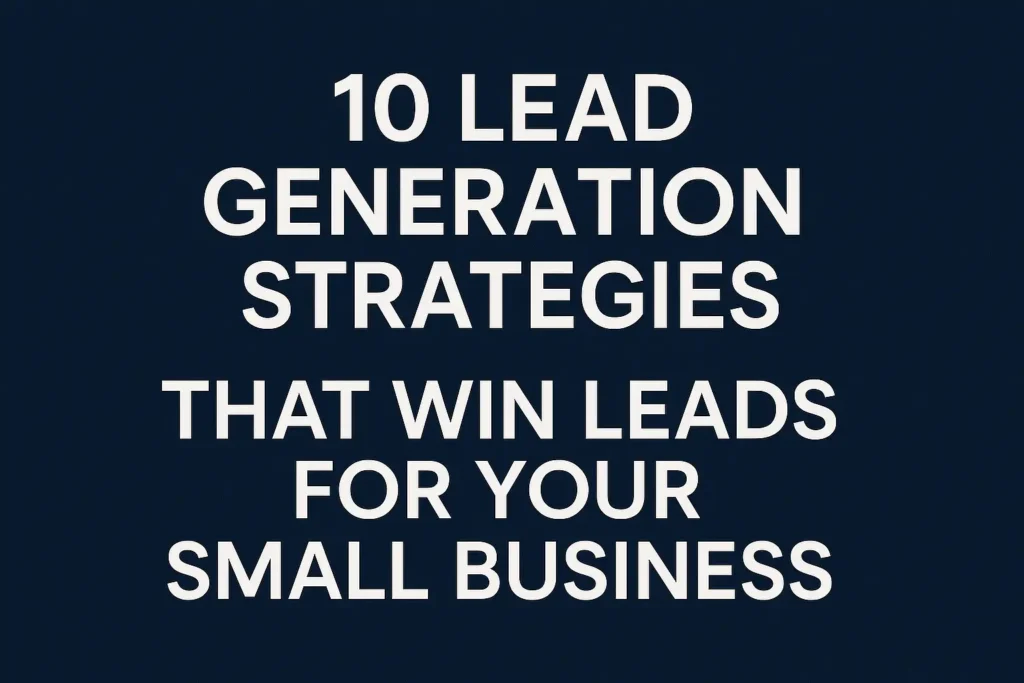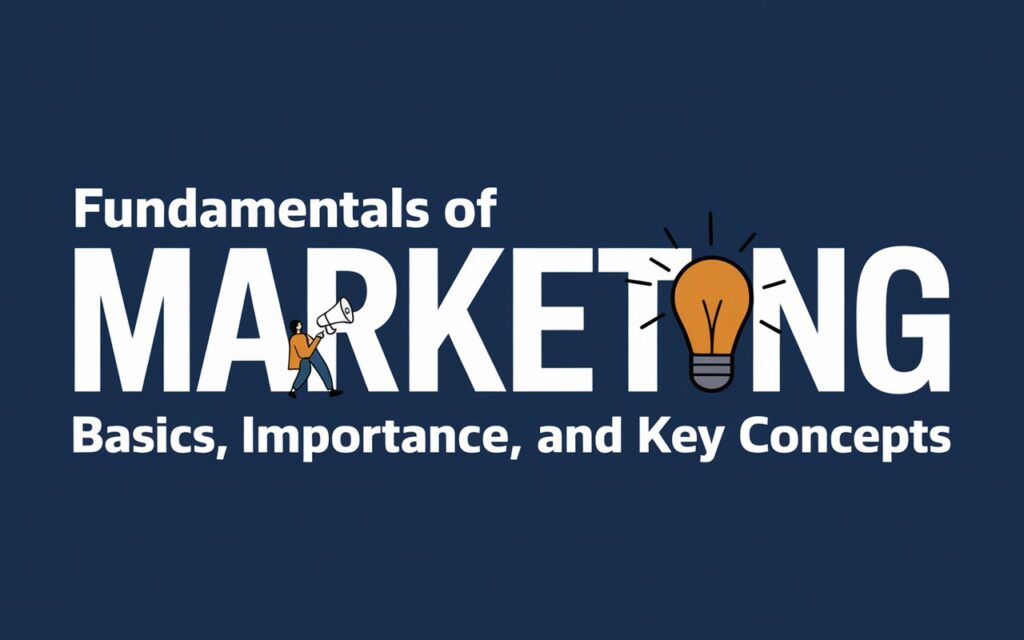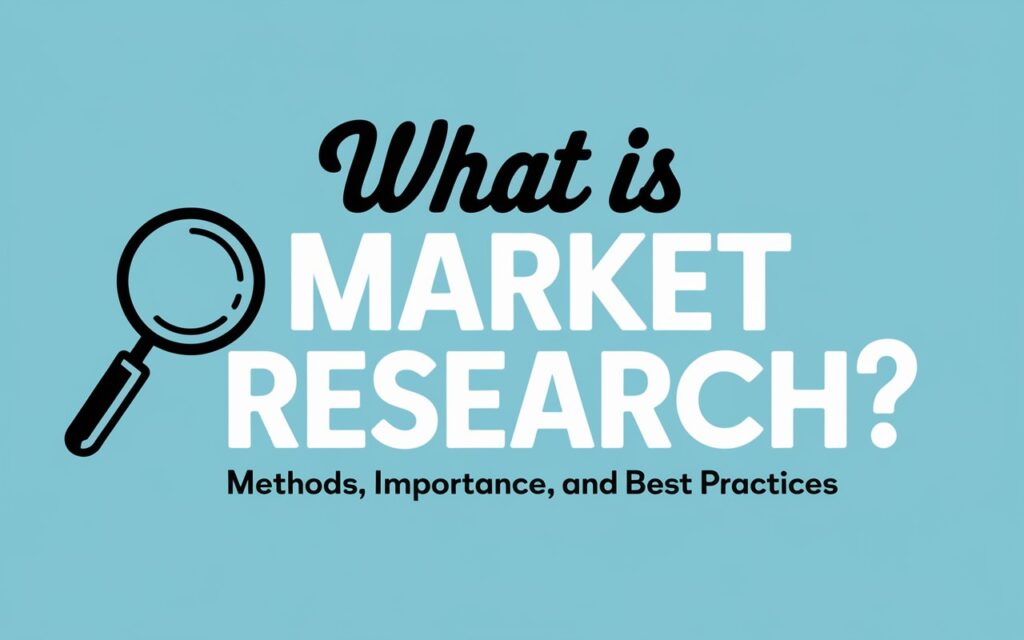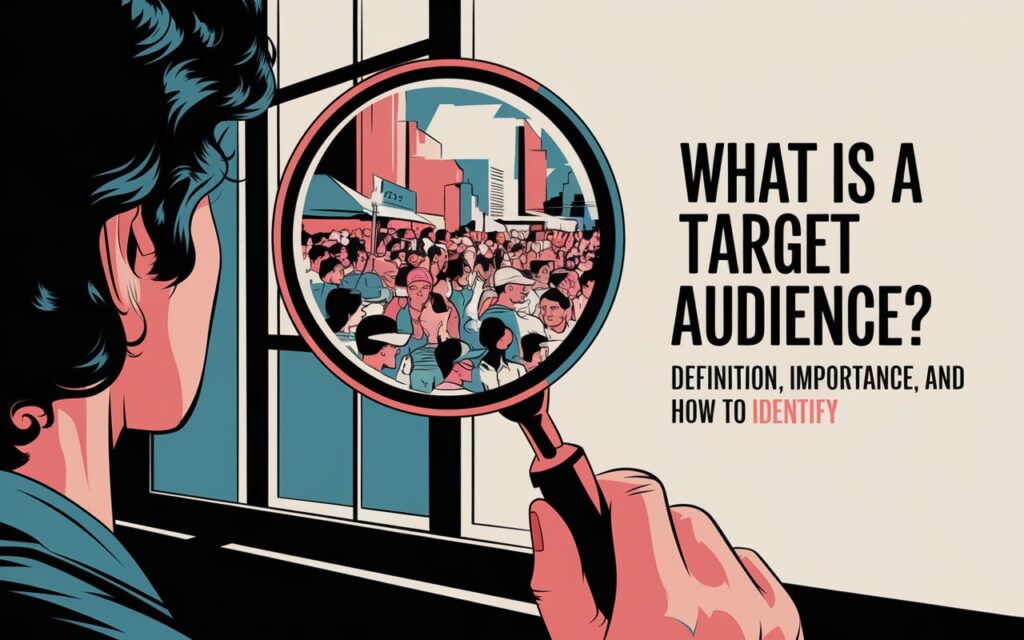The internet is full of “Top 10” articles on lead generation. I’ve read them all, and honestly, most of them just list the same tired strategies in a different order. They’re missing the secret sauce—the “why” and the “how” that makes a strategy actually work. They sound like they were written by a robot, and that’s not how a business owner thinks or talks.
Over my years working with small businesses, I’ve seen what actually moves the needle. It’s not about the flashiest new tool; it’s about connecting with people. It’s about building trust. It’s about being human in a digital world. That’s what this is all about.
So, forget the robotic listicles. This is about real talk, real strategies, and how to get real people to become your customers. This isn’t just a list; it’s a blueprint built on years of experience, designed for you—the small business owner who’s tired of guesswork.

Top 10 Lead Generation Strategies for Small Businesses
1. The One-on-One Power of Personalized Outreach
Let’s start with a truth: a cold email blast is almost always a waste of time. I’ve seen it fail again and again. The best lead generation isn’t about volume; it’s about quality.
The Strategy: Instead of sending 1,000 generic emails, spend that time crafting 10 highly personalized emails. I mean, really personalized. Don’t just use their name. Mention something specific about their company, a blog post they wrote, or a recent success they shared on LinkedIn. Show them you’ve done your homework. This builds an immediate connection.
How I’ve seen it work: One of my clients, a local IT consultant, was struggling. We switched his strategy from blasting out a monthly newsletter to targeting just five new businesses a week. He’d find them on LinkedIn, read their company updates, and then send a short, simple email. “Hi [Name], loved your recent post about [Topic]. I’ve seen a few companies in your industry struggle with [related problem], and I have a quick idea that might help. Do you have 15 minutes next week?” The response rate skyrocketed. He wasn’t selling; he was starting a conversation.
2. The Trojan Horse of High-Value Content
Think of your content not as a sales pitch, but as a gift. It’s how you get people to trust you before they’ve even considered buying from you.
The Strategy: Create something so valuable and helpful that people are willing to give you their email address for it. This is your “lead magnet.” Don’t just make another e-book. Think about your clients’ biggest pain points. A simple cheat sheet, a step-by-step template, or a free calculator tool can be more valuable than a 50-page e-book.
Why it works: Small business owners are busy. They need practical solutions, not academic essays. A marketing consultant might offer a “5-Minute Social Media Audit Checklist.” A graphic designer could create a “Branding Guide for Non-Designers.” This content shows your expertise without asking for anything in return, and the exchange for an email feels fair.
3. The Unsung Hero: Optimizing Your Website for Conversion
So many businesses focus on getting traffic but forget to tell people what to do when they get there. Your website isn’t just a brochure; it’s your best salesperson.
The Strategy: Make it ridiculously easy for a visitor to become a lead. This means clear calls-to-action (CTAs). Use action-oriented buttons like “Get Your Free Quote” or “Book a 15-Minute Consultation.” Place these buttons strategically on every key page, and make them visually stand out.
A quick tip: I always tell people to look at their website from a first-time visitor’s perspective. Can you find the contact form in under 5 seconds? Is the phone number visible? Is there a clear next step on every page? If not, you’re losing leads.
4. The Power of Personal Recommendations (Yes, It’s Digital Too)
You know how word-of-mouth works in real life? It’s even more powerful online.
The Strategy: Actively seek reviews and testimonials. After a client has a great experience, ask them to leave a review on Google, Yelp, or a relevant industry site. Better yet, ask if you can use their success story as a case study. People trust what other customers say far more than what you say about yourself.
The Bonus: These reviews and testimonials often contain keywords that other potential customers are searching for. It’s like free, authentic SEO.
5. The “Go-to” Expert: Leveraging Community Forums
This is about being helpful, not salesy.
The Strategy: Find online communities where your ideal clients hang out. This could be a niche subreddit, a LinkedIn group, or an industry-specific forum. Instead of posting links to your services, answer people’s questions genuinely. Offer advice. Share your expertise. Don’t ask for anything in return.
The Payoff: People will notice your consistent, helpful presence. They will see you as an expert. When they eventually need your service, your name will be the first one that comes to mind. Your profile will do the selling for you.
6. The Collaborative Advantage of Partnerships
You don’t have to go it alone. Teaming up with other businesses can open up new lead channels.
The Strategy: Identify non-competing businesses that serve the same audience you do. A web designer could partner with a copywriter. A tax accountant could partner with a financial planner. Collaborate on content, co-host a webinar, or simply refer clients to each other.
A good example: I worked with a marketing agency that partnered with a local photography studio. The agency needed professional photos for their clients’ websites, and the studio needed help promoting their services. They created a joint package, promoted each other on social media, and both saw a significant increase in leads. It was a win-win.
7. The Social Listener: Using Social Media as a Lead Engine
Social media isn’t just for posting pictures; it’s for listening.
The Strategy: Set up alerts for keywords and hashtags related to your business or industry. Use tools to monitor mentions of your competitors. When you see someone asking a question you can answer, jump in and help. When you see a potential lead talking about a problem you can solve, offer a genuine, helpful comment.
How to avoid being spammy: This isn’t about direct pitching. It’s about adding value to the conversation. If someone asks for a tool recommendation, and you have a blog post about it, share the link and add a helpful comment. Be part of the community, not just a brand pushing a product.
8. The Classic (But Reimagined): Email Marketing
Yes, email is old-school, but it’s still one of the most powerful tools for nurturing leads.
The Strategy: Once you have a lead’s email (from your lead magnet or website), don’t just put them on a mailing list. Put them on a simple, automated email sequence. Send them a few valuable, non-salesy emails over the course of a week or two. Share your best content, offer tips, and build a relationship. Only then do you introduce your services.
The point of this: You are warming up a cold lead. By the time you mention your product, they will already see you as a trusted source of information, not just another person trying to sell them something.
9. The In-Person Advantage: Webinars and Workshops
Even in a digital-first world, live events build connection like nothing else.
The Strategy: Host a free webinar or workshop on a topic where you are an expert. The key is to deliver immense value in that hour. Your goal isn’t to sell; it’s to teach. You can even host these online for a global audience. At the end, you can offer a “soft pitch”—something like, “If you want help implementing these strategies, feel free to book a free call with me.”
Why this works: When people see your face, hear your voice, and learn from you directly, they build a much stronger connection and trust you more than they ever would from reading a blog post.
10. The Smart Scrapper: Competitor Analysis
This isn’t about copying; it’s about finding opportunities.
The Strategy: Look at what your competitors are doing. What keywords are they ranking for? What content are they creating? What kinds of ads are they running? Then, think about what they’re not doing. Is there a keyword they’re missing? A pain point they haven’t addressed?
An experience I’ve had: I once helped a client in the fitness industry analyze his competitors. We found all of them were focused on “weight loss.” We decided to create content on “building strength for beginners” and “injury prevention.” We filled a market gap, avoided direct competition, and attracted a whole new audience of leads who felt ignored by the rest of the industry.
So there you have it. Ten strategies, none of them rocket science, but all of them rooted in a single, simple idea: Lead generation isn’t about tricking people into becoming customers. It’s about showing them you can genuinely help. It’s about building trust, one small, human interaction at a time. The rest is just a numbers game.
Read: Mastering Marketing 101: Your Essential Guide to the Basics





